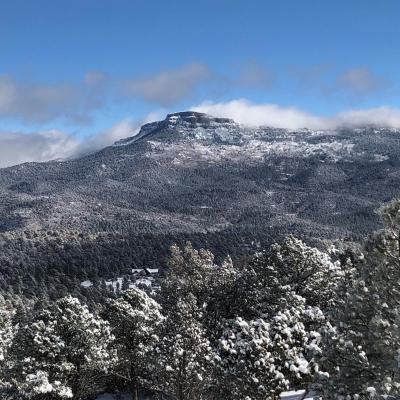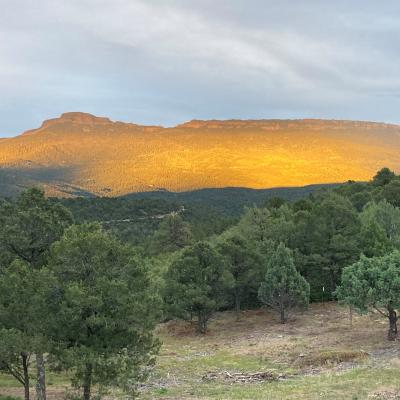Get Rid of Scrub Oak and Locust
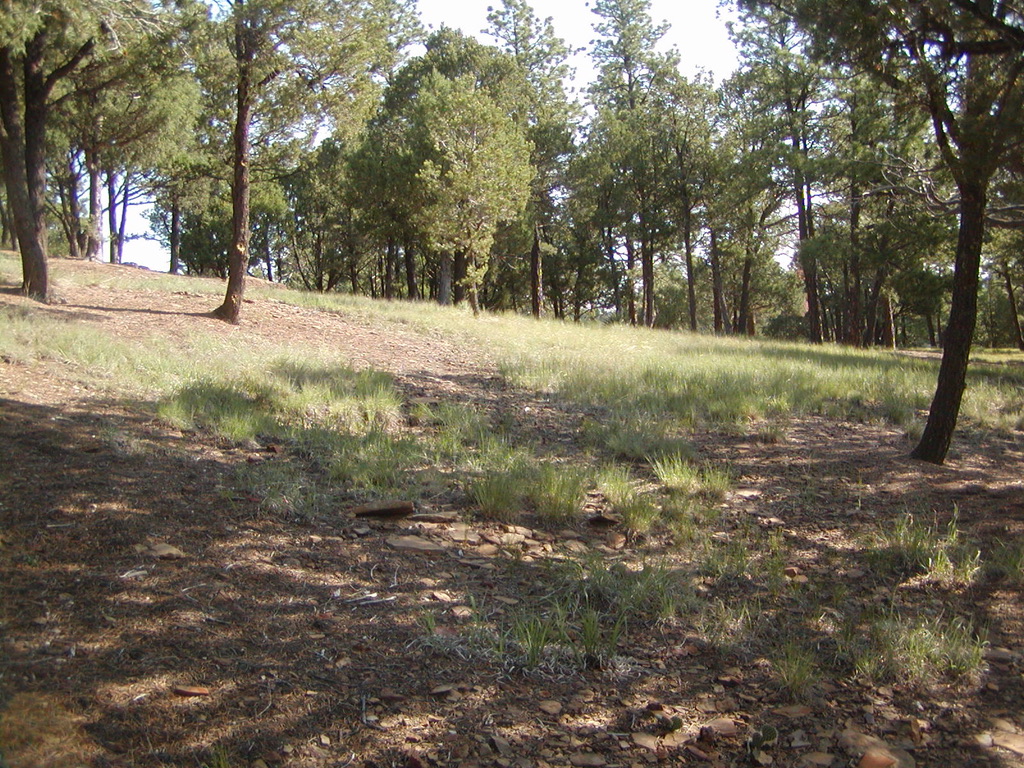

Get Rid of Scrub Oak and Locust
Scrub Oak & Locust My Weed Formula
By Carol Rawle
Near the turn of this current century, we on the Santa Fe Trail Ranch discovered the joy and ease of machine mitigation of Gamble oak and New Mexico locust. Before that, some people bought expensive DR brush mowers to try to tame the stubborn thick stemmed woody scrub that was a ubiquitous feature of our landscape. Due to my hilly terrain and such a machine being beyond my budget, I resorted to long handled pruning loppers and a chain saw to tackle the impenetrable brush. I was determined to be able to enjoy as much of my acreage as possible along with reducing the fuel load for wild fire. However, it was slow-going, to say the least.
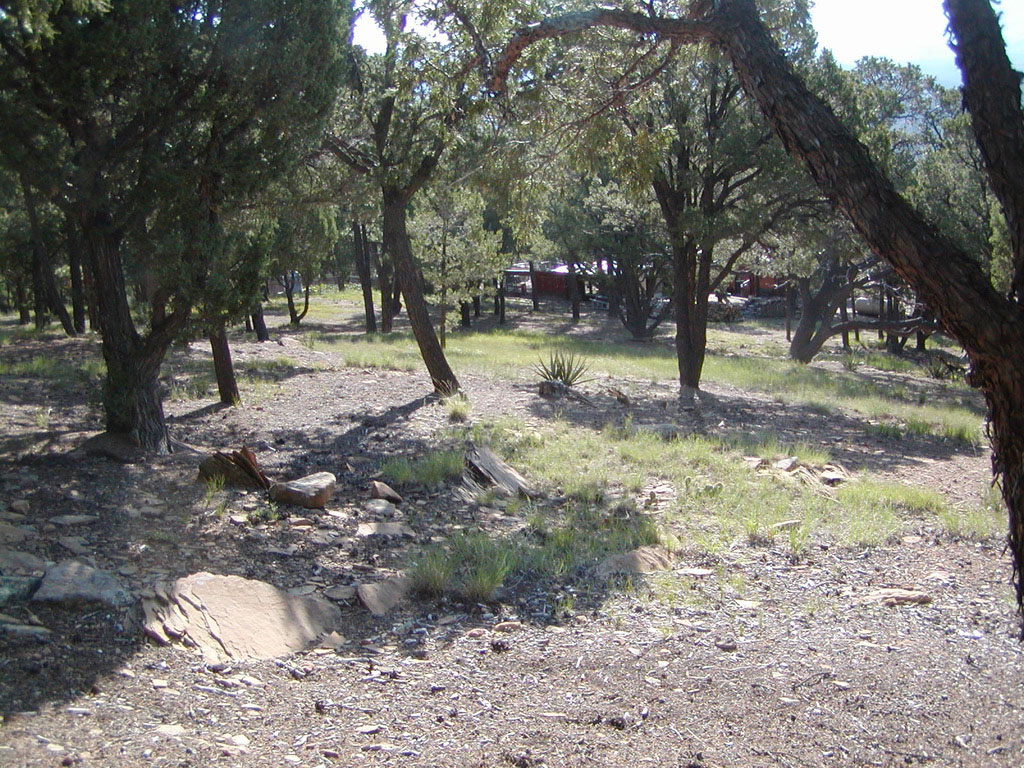 Most of our residents have seen the mulching machines operating along our roadways and on individual lots. They are small, highly maneuverable compact excavators with an articulating skid steer mowing head. They are able to pulverize shrubs and small trees with surprising ease and speed. What made it very affordable for me and others to hire such a machine in those early days was matching government grant money for the purpose of reducing wild fire fuel.
Most of our residents have seen the mulching machines operating along our roadways and on individual lots. They are small, highly maneuverable compact excavators with an articulating skid steer mowing head. They are able to pulverize shrubs and small trees with surprising ease and speed. What made it very affordable for me and others to hire such a machine in those early days was matching government grant money for the purpose of reducing wild fire fuel.
In the weeks preceding the machine coming to my place early in the first decade of the 2000s, I limbed up as many trees as possible to maximize the ability of the machine to mow under them. I piled the limbs for the machine to mulch when it mowed the scrub. That first target area was two acres of arid south facing slope that was prime fuel for a wild fire driven by prevailing winds toward my house. The operator was an especially skilled young man who took the scrub down to below soil level and he even ground up the large tree stumps left from my tree thinning efforts.
When he was finished I had about two acres of cleared land that I was able to walk over for the first time without fear of tripping or getting slapped in the face and scratched by low branches and rangy scrub. Or bitten by a concealed rattlesnake. Since I’m a card carrying member of the OCD club, I decided to rake up and remove the larger debris left over from mulching the small juniper and pinion trees.
However, I wasn't aware of how fast the scrub would grow back. A few weeks after the machine had finished, while I was still catching my breath, I was surprised and horrified to see the scrub oak and 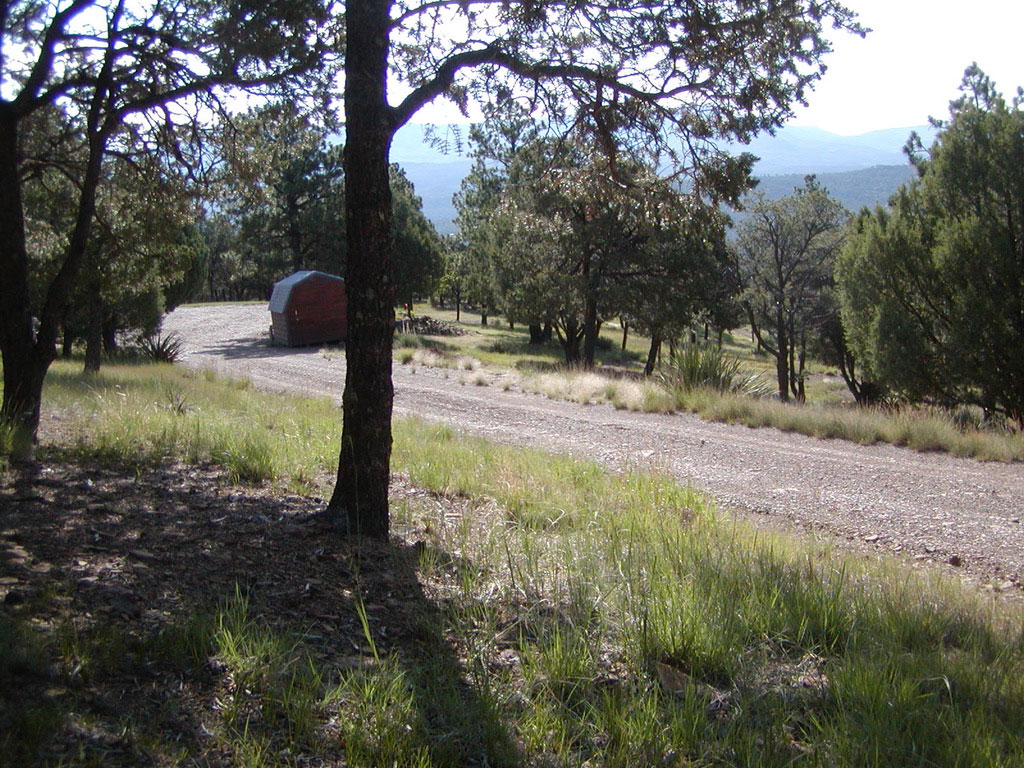 locust were approaching half a foot high. The oak brush was coming in more dense than before since the mowing had stimulated the lateral roots to send up hundreds of new shoots. Far from vaporizing the scrub, mowing had stimulated it into growing dozens of new plants in spots where before there were a mere few. Here was one of those lessons of unintended consequences.
locust were approaching half a foot high. The oak brush was coming in more dense than before since the mowing had stimulated the lateral roots to send up hundreds of new shoots. Far from vaporizing the scrub, mowing had stimulated it into growing dozens of new plants in spots where before there were a mere few. Here was one of those lessons of unintended consequences.
Having retired from the California State Park system, I was experienced with the use of herbicides to control exotic plant species in the parks. In fact, at every park I had worked, I had battled one exotic species or other, everything from tamarisk along the Colorado River to French broom in northern California. I had even conquered poison oak that was encroaching on picnic areas and hiking trails in a park in the redwoods.
I had already been trying various herbicides in addition to lopping the oak, but nothing was working all that well. The problem was the thick, waxy leaves of Gamble oak repelling the herbicide. The plants shrugged it off without much being able to penetrate. So I applied for a professional applicators license, passed a tough test, and got my license to buy the restricted herbicide the public can’t buy. It was scary wicked stuff, but it did no more to control the scrub oak than the over-the-counter herbicides. I needed to get creative.
passed a tough test, and got my license to buy the restricted herbicide the public can’t buy. It was scary wicked stuff, but it did no more to control the scrub oak than the over-the-counter herbicides. I needed to get creative.
I had used diesel fuel as an herbicide enhancement in the state park I worked at on the Colorado River where tamarisk was a nightmare exotic species. At one point, it had overgrown the park road along the river, and it had to be closed until we could chainsaw a tunnel through the thick vegetation. I knew I didn’t want to do that every summer because summers there were a miserable 117F until the end of October.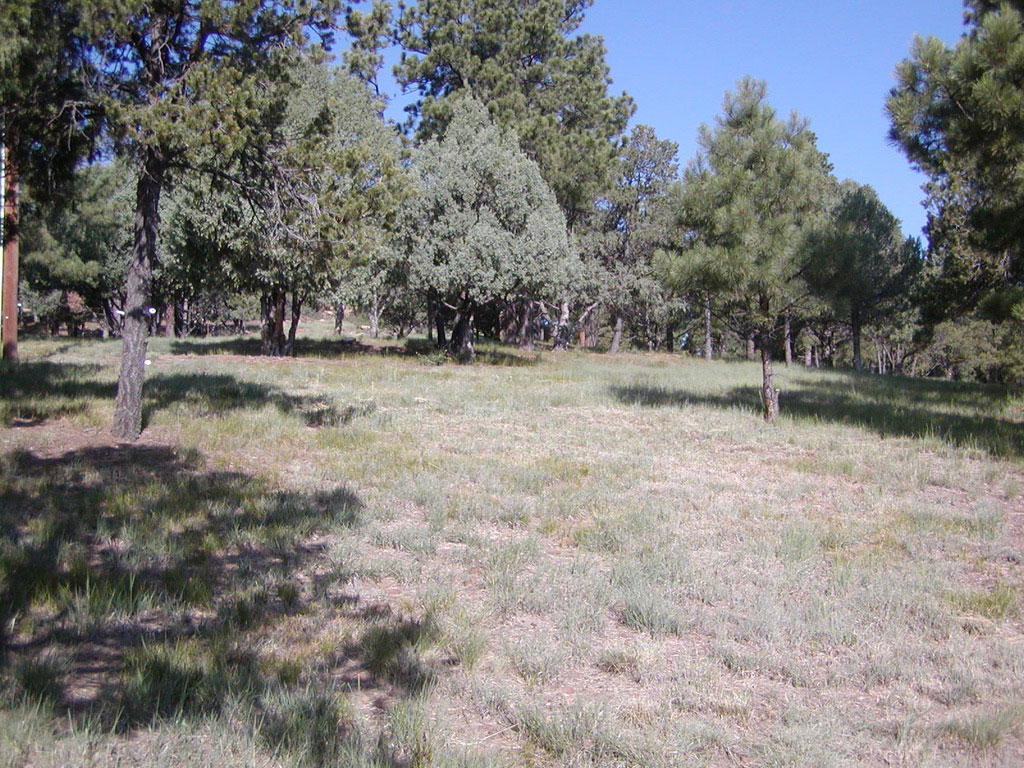 Since tamarisk, or salt cedar, is heavily coated with mineral salts, I decided to spray it with herbicide mixed with diesel fuel to penetrate the foliage once we cut it back so as to reduce the heavy maintenance.
Since tamarisk, or salt cedar, is heavily coated with mineral salts, I decided to spray it with herbicide mixed with diesel fuel to penetrate the foliage once we cut it back so as to reduce the heavy maintenance.
Diesel acts as a surfactant, reducing the surface tension of liquids so that herbicide spreads evenly over the plant surface. It also increases the ability of the herbicide to penetrate the plant tissue. This is crucial in view of the waxy moisture repelling leaves of Gambel oak. I decided to go back to using the publicly available glyphosate (Roundup concentrate) and 2-4D, the first to target the roots and both to target the foliage, hoping for a synergistic effect. I decided to add a squirt of Dawn detergent, another surfactant to do double duty in that area.
Diesel fuel may seem like something that we do not want to pollute the environment with, but it’s actually perfectly safe as an herbicide additive when used correctly. The unpleasant odor dissipates within a couple of days, and it’s biodegradable, any residue breaking down into fertilizer, it being a petroleum product derived from plants growing millions of years ago.
 The proportions I used were two gallons water, four ounces glyphosate (Roundup concentrate), two ounces 2-4D, two cups diesel, and a hefty squirt of Dawn dish detergent. This mixture does not want to stay mixed. It requires constant agitation. However, a beaten raw egg mixed into the solution will act as an emulsifier and that will keep all of the ingredients mixed without need for continual agitation. Powdered eggs work just as well as fresh.
The proportions I used were two gallons water, four ounces glyphosate (Roundup concentrate), two ounces 2-4D, two cups diesel, and a hefty squirt of Dawn dish detergent. This mixture does not want to stay mixed. It requires constant agitation. However, a beaten raw egg mixed into the solution will act as an emulsifier and that will keep all of the ingredients mixed without need for continual agitation. Powdered eggs work just as well as fresh.
 I tried out this formula on my oak regrowth, and it was successful beyond my wildest hopes. It happened to be a hot day when I applied it, and within a few hours, the oak was noticeably wilting. Since the solution was taken into the plant tissue immediately, it was also rain-proof within an hour of application. Subsequently, I always tried to spray on a hot day for optimum results.
I tried out this formula on my oak regrowth, and it was successful beyond my wildest hopes. It happened to be a hot day when I applied it, and within a few hours, the oak was noticeably wilting. Since the solution was taken into the plant tissue immediately, it was also rain-proof within an hour of application. Subsequently, I always tried to spray on a hot day for optimum results.
I was looking at two acres of oak regrowth to spray. It was pretty daunting. But I wasn’t about to give up without a fight and just let the scrub grow back and ruin my mitigation. I got the idea to use a big ball of used twine and some old clothesline to lay out grids of fifteen foot squares so I wouldn’t wander. I also used blue spray pattern indicator in the spray tank, a water soluble dye, so I could see what I’d already sprayed. Within just a day or two of spraying, I could see the results. This enabled me to go back immediately and hit any plants that were still showing signs of life. I used a backpack sprayer, and I recommend it rather than a hand carry garden tank sprayer as it’s far less fatiguing.
The following spring, only about a fourth of the oak was growing back. Where the first spraying was extremely labor intensive, taking me three or four days, spraying the regrowth was a piece of cake. It took me no longer than a morning stroll would take and no harder to do.
As the oak brush emerges in spring, the leaves are reddish pink. Then they turn a light green. You must wait until those early leaves turn fully deep green, a sign the plant is able to conduct photosynthesis.  Herbicides work in concert with this natural process and unless a plant is able to photosynthesize, applying herbicides is futile and a waste of money. The same is true after foliage turns brown in winter. It also must be warm or hot rather than cool or freezing for herbicides to work.
Herbicides work in concert with this natural process and unless a plant is able to photosynthesize, applying herbicides is futile and a waste of money. The same is true after foliage turns brown in winter. It also must be warm or hot rather than cool or freezing for herbicides to work.
The third year, there were so few oak plants emerging, I easily sprayed the remaining plants in an hour. By the fourth spring, I had zero oak brush regrowth, and in another couple of years, all the leftover oak stems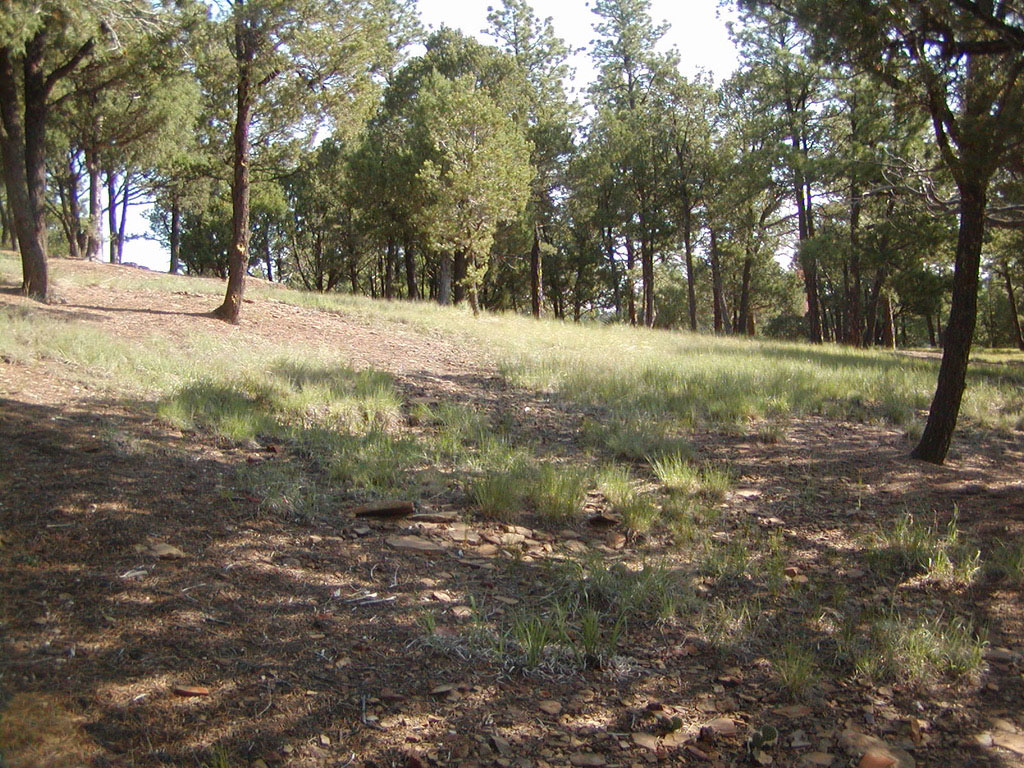 had rotted and I could kick them over with the toe of my boot. It’s not necessary to dig them up, even if you are a member of the OCD club.
had rotted and I could kick them over with the toe of my boot. It’s not necessary to dig them up, even if you are a member of the OCD club.
By the end of the third year, the original two acres was 100% free of oak brush and locust, a pleasure to stroll over, and no danger of tripping over oak stems. I continued mitigating a few acres every few years thereafter, ending up with a total of around eight acres of grassy parkland surrounding my house.
There is another method of applying herbicide that I employed with larger tree-size Gambel oak and locust. This method is called stump treating. It’s a little more labor intensive for the oak, but you can save a lot of money since you are not spraying the foliage at all. For locust, you saw down the tree or shrub at ground level and spray the freshly cut stump. This stump-treat solution is one half glyphosate and one half water. If you are a team of two, one person can cut the locust down while the other person follows behind with a quart spray bottle to immediately treat the fresh-cut stump. It must be treated right away as the stump seals itself within several minutes and then repels the herbicide. This single stump treatment kills the locust roots. The plant will not grow back.
Treating the oak stumps is a bit different. Since Gambel oak has multiple lateral roots coming off the central stem that will sprout new plants when the main stem is cut, I take a mattock and dig a few inches into the soil around the stem to expose the lateral roots. Then I take pruners and sever the laterals from the stem. Then I spray the stump as well as the fresh cuts on the laterals. This may seem like a lot of work, but this practically assures you will have no regrowth requiring repeat foliage treatment as you chase the lateral root sprouting.
 There is much oak brush mitigation taking place on the Santa Fe Trail Ranch today and it looks so beautiful for a few weeks, but it and the locust grow back ever so quickly. The regrowth is nearly as difficult to try to walk through as the original brush was before, and in one year, it’s several feet tall again The locust is an annoyance and the thorns are a hazard, and it all becomes ladder fuel for wild fire again. It does not need to be this way. With a little effort and herbicide following foliage regrowth after mitigation and a few hours of effort the following year and minimal effort the third year, all of that scrub can be 100% eradicated and gone for good. Granted, mowing will keep the scrub oak and locust down to a few inches, but yearly mowing is a continuous expense and chore. And four-inch stems will continue to be annoying when they cause you to stumble and trip when walking on your land around your home. Why settle for that when you can have easy to walk on native grasses surrounding your home instead?
There is much oak brush mitigation taking place on the Santa Fe Trail Ranch today and it looks so beautiful for a few weeks, but it and the locust grow back ever so quickly. The regrowth is nearly as difficult to try to walk through as the original brush was before, and in one year, it’s several feet tall again The locust is an annoyance and the thorns are a hazard, and it all becomes ladder fuel for wild fire again. It does not need to be this way. With a little effort and herbicide following foliage regrowth after mitigation and a few hours of effort the following year and minimal effort the third year, all of that scrub can be 100% eradicated and gone for good. Granted, mowing will keep the scrub oak and locust down to a few inches, but yearly mowing is a continuous expense and chore. And four-inch stems will continue to be annoying when they cause you to stumble and trip when walking on your land around your home. Why settle for that when you can have easy to walk on native grasses surrounding your home instead?
Grasses quickly fill in the spaces left by eradicating the oak brush and locust. The seeds of a dozen different species of native grass lie patiently under all that brush. The grasses preceded the oak brush by hundreds of years, and all these seeds need is sun and moisture to grow once again. By eradicating the scrub brush, you are removing the competition for those elements. It is not necessary to buy grass seed since it’s already in place. Grass is a pleasure to walk on, everyone can agree on that. Most years, the deer, elk and our visiting cows will even mow it for you for free. And boy does it ever look terrific compared to the scrub that used to choke your landscape and impede your ability to enjoy your land.
since it’s already in place. Grass is a pleasure to walk on, everyone can agree on that. Most years, the deer, elk and our visiting cows will even mow it for you for free. And boy does it ever look terrific compared to the scrub that used to choke your landscape and impede your ability to enjoy your land.



